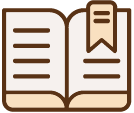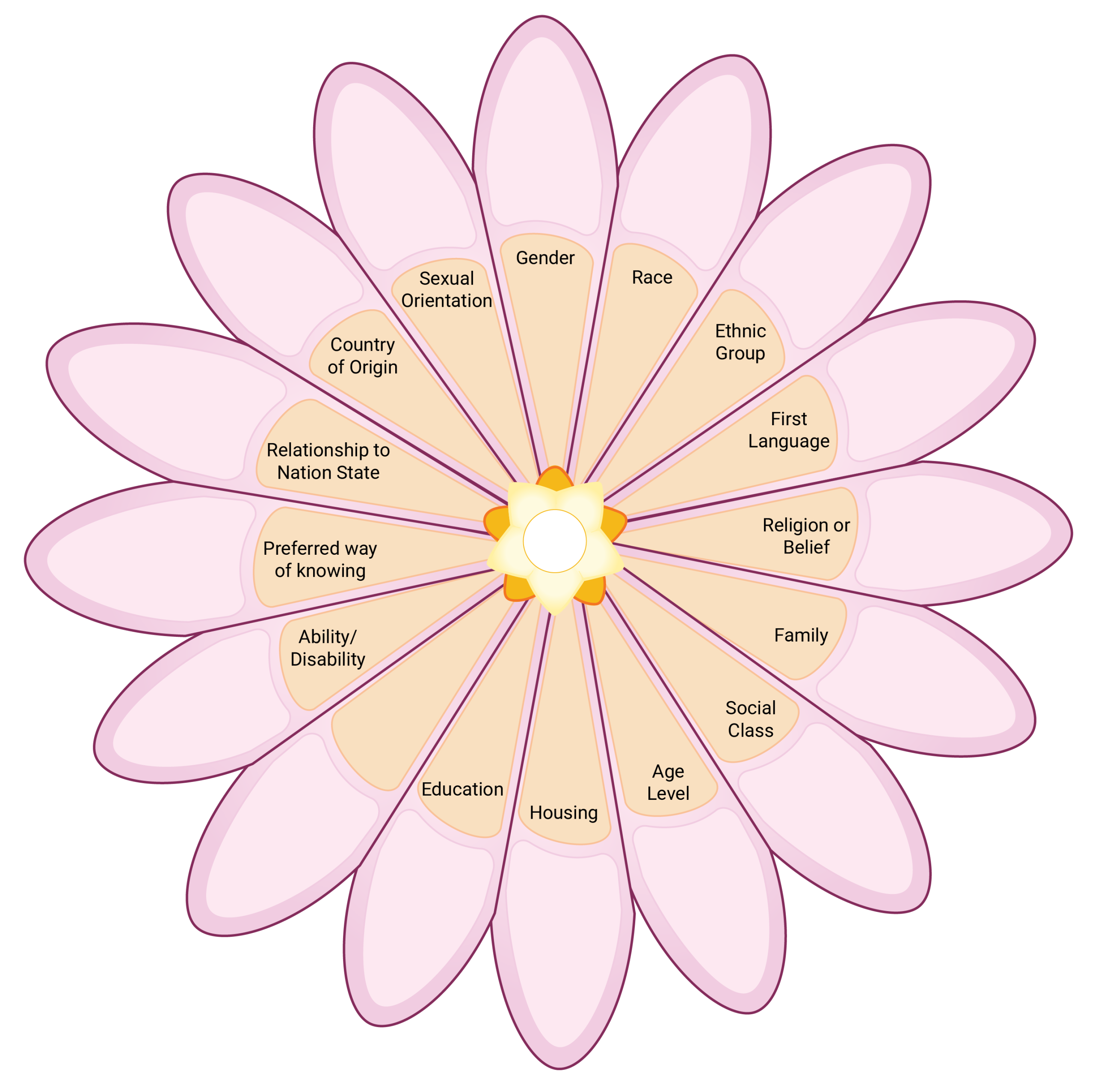1.3 Systems of Oppression
Oppression is the unequal treatment of a person or a group through social structures, laws, policies, or norms.
Often systems of oppression are invisible to individuals who are not impacted by them. This means that for individuals who hold positions of privilege, it is often impossible to see the barriers experienced by individuals impacted by systems of oppression.
Watch the following short, animated video to get a better sense of how oppression or barriers can be invisible to those who are not impacted by them.
Complete the table in your workbook, or available from the link below, reflecting on each system of oppression and the groups that is most negatively impacted by the system.
| Assumed Social Norm | Oppressed Groups | |
| Racism | ||
| Sexism/ Transphobia | ||
| Classism | ||
| Homophobia | ||
| Ableism | ||
| Ageism | ||
| Language Discrimination | ||
| Academic Elitism |
MODEL
| Assumed Social Norm | Oppressed Groups | |
| Racism | White | Indigenous, Black, Persons of Colour, Bi-racial People |
| Sexism/ Transphobia | Cis-male | Female, Transgendered, Intersex, Non-binary |
| Classism | Middle-upper Class | Poor & Working Class |
| Homophobia | Heterosexual | Homosexual, Queer Folks |
| Ableism | Able-bodied | Disabled People |
| Ageism | Adult | Youth, Older Adults |
| Language Discrimination | English Speaker | Non-English or English as an Additional Language |
| Academic Elitism | University Educated | Less than university educated |
Download fillable Assumed Social Norms PDF
All activities can also be found in a downloadable workbook. Visit the ‘Using this Resource‘ page to access the workbook in MS Word and PDF formats.
Intersectionality
Definition
Experiences of oppression and privilege are complex and aren’t shaped by just one part of who we are. We all hold multiple social identities at the same time, which intersect to shape our experiences of oppression and privilege. This idea is called intersectionality. The term was coined by Kimberly Crenshaw, an American Civil Rights Advocate, to explain how different systems of oppression don’t act independently. They’re interconnected, interacting and reinforcing systems of oppression.
To deepen your understanding, check out the video below, “What is Intersectionality.” It breaks down how intersectionality works in real life and why it’s such an important tool for understanding identity, power, and justice.
(Optional)
Still want to know more? Watch the following video from Kimberly Crenshaw on Intersectionality (6 minutes).
Building on your identity mosaic, we’re now going to think more about how your social identities impact your social positioning and positionality. In this activity, you’ll use a tool called the Power Flower to explore how different parts of your identity connect to systems of privilege and oppression.
Keep in mind that some of your social identities, like your level of education, your experience of disability, or your ways of knowing, might change over time. Others might feel more constant. All of them play a role in shaping how you engage with the world and with others.
The Power Flower was created by educators at the University of Toronto to help people reflect on their different social identities and how those identities affect their position in society, especially in relation to groups who holds power and privilege. We’ve adapted it slightly to include identities that may impact how you engage in professional settings.
The goal of this activity is to help you reflect on how your identities may shape your experiences and the way you work with others in your profession. Remember that everyone may feel varying levels of comfort with this type of reflective work. It’s okay to take your time, take breaks, or pause the activity when needed.
To use this tool, follow the steps provided:
1. Outer Petals – Dominant Social Groups
In each of the outer petals, write down the socially dominant group for that identity category in your context.
- For example, in Canada, the dominant group for citizenship might be “Canadian citizen.”
- In academic institutions, the dominant knowledge paradigm values “Western science” and “objectivity” as the most reliable and valuable form of knowledge or evidence. Other knowledge traditions, such as Indigenous ways of knowing are not typically recognized in the same way.
2. Inner Petals – Your Own Identities
- In the inner petals, write your own social identities for each category (e.g., race, gender, religion, citizenship, ability, etc.).
3. Reflect on Power and Privilege
- Compare your inner petals to the outer petals.
- For any petal where your identity matches the dominant group, colour in that petal fully. This represents areas where you may hold social power or privilege.
- If your identity partially aligns (e.g., you’re a cisgender woman in the gender petal), you might colour the petal partially to show some alignment with dominant norms but not full privilege (i.e. cisgender males are dominant and trans gendered people are oppressed).
4. Take Time to Reflect
- Think about what this tells you about how you move through the world and engage with others, particularly in professional settings. Consider how your identities might shape your experiences, your access to opportunities, or your interactions with people.
For each of the petals below, fill in the dominant group in the inner petal. Fill in your social identity in the outer petal.
| Starting Categories:
Race Ethnicity Gender Sexual Orientation Ability/Disability Age Level of Education Spoken Language(s) |
Additional Categories:
Social Class Housing Status Mental Health Body Size Religion & Spiritual Beliefs Citizenship Status Preferred Knowledge System(s)
|
Download fillable Power Flower PDF
All activities can also be found in a downloadable workbook. Visit the ‘Using this Resource‘ page to access the workbook in MS Word and PDF formats.
The unequal treatment of a person or a group through social structures, laws, policies, or norms.
A term coined by Black feminist legal scholar Dr. Kimbleré Crenshaw to describe the ways in which our identities, like race, gender, class, ability, etc., intersect to create overlapping and interdependent systems of discrimination or disadvantage.



